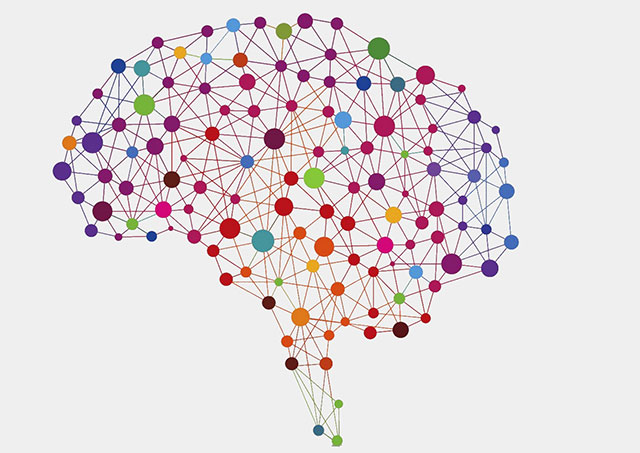This article explores how organisations will need to change in order to survive and thrive in the digital age. The learning organisation – committed to “learn, unlearn and relearn” – creates a fluid and connected environment, resilient in its ability to grow, develop, collaborate and innovate.
One of my favourite quotes that sets the scene for this article is:
“The illiterate of the 21st century will not be those who cannot read and write, but those who cannot learn, unlearn and relearn.” Alvin Toffler
‘Learn, unlearn and relearn’ is the key to thriving in the digital age.
To achieve this, we need organisations to lead this from the top to make learning a key priority and key component of the culture performance.
In some markets there is a fear of job loss, emotional fatigue and overload of information and demands that can feel overwhelming with very little light showing at the end of a long dark tunnel. Now, there are further advancements in AI and automation driving this fear to new heights. Just look at Telstra’s recent announcement cut of 8,000 jobs in a massive restructure over the next 3 years, where technology advancements in AI and automation is key to their strategy to stay competitive and cost-effective.
However, it is time to shift our thoughts towards reappraisal – ‘looking at the opportunities ahead’ and preparing for the economic change so it is not overwhelming for your people – instead of fearing it.
What can you do to promote a learning organisation?
The following are some ways in which you can promote a learning environment in your organisation. These ideas will help you get started, but true transformation takes time, commitment, investment and resources. In return, your organisation is investing in its financial future.

Debrief every project and initiative:
If you have developed a new product, designed an ad campaign, or purchased new equipment, to cite a few examples, don’t just move on to the next activity. Bring together everyone in the organisation who contributed to the success or failure of the initiative.

Systems thinking:
The underlying structure and the interlinking components of each of our work systems shapes a great deal of the behaviour of the individuals who work inside the work system.
To achieve this, we need organisations to lead this from the top to make learning a key priority and key component of the culture performance.
In some markets there is a fear of job loss, emotional fatigue and overload of information and demands that can feel overwhelming with very little light showing at the end of a long dark tunnel. Now, there are further advancements in AI and automation driving this fear to new heights. Just look at Telstra’s recent announcement cut of 8,000 jobs in a massive restructure over the next 3 years, where technology advancements in AI and automation is key to their strategy to stay competitive and cost-effective.
However, it is time to shift our thoughts towards reappraisal – ‘looking at the opportunities ahead’ and preparing for the economic change so it is not overwhelming for your people – instead of fearing it.
The underlying structure and the interlinking components of each of our work systems shapes a great deal of the behaviour of the individuals who work inside the work system.
When something goes wrong, rather than seeking someone to blame, ask: What about the work system caused that individual to fail? How else could we improve on this next time by capturing and applying the key learning?
Learning about your biggest asset – ’your brain’ and how to effectively connect with other brains around your work through the evidence-rich Neuroscience of leadership, performance, productivity and fulfillment – will change the way your business engages, motivates, rewards and communicates effectively with your people. It will save hours in productivity.

Protect our deep-thinking and reflection time:
Our deep-thinking time is GOLD and a key component of this is quietening the brain, as this is where insights, innovation and creativity comes from, leveraging your executive function part of your brain called the Prefrontal Cortex, Intuition and tapping into the unconscious (our rich database). This is what differentiates humans from AI and will help us to make important decisions and drive innovation.

Mental models:
These are the deeply held pictures each of us holds in our mind about how the world, employment, our families, and so on, work. Mental models influence our vision of:
- how things happen at work
- why things happen at work
- how we perceive/code them and
- how we respond and act.

Building shared vision:
By shared vision, I am referring to a process in which the original vision for an organisation, probably determined by the leader, is translated into shared pictures around which the rest of the organisation finds meaning, direction, and reasons for existing.
I love the work of Simon Sinek the author of Start with the WHY; it’s worth reading the book or watching the TED talk
-
- Team learning
In my opinion, teams are the fundamental learning unit in the modern digital workplace. It is the dialogue among the members of the team that results in stretching the ability of the organisation to grow, develop, collaborate and innovate. - Debrief projects and initiatives
If you have developed a new product, designed an ad campaign, or purchased new equipment, to cite a few examples, don’t just move on to the next activity. Bring together everyone in the organisation who contributed to the success or failure of the initiative. Debrief what went right, what didn’t go to plan, and what you will do differently in the future. Learn from each project, initiative, and activity. In the debriefing process, seek not to place blame; aim for shared understanding. In the process, create an environment in which people feel safe to share and celebrate the wins along the way. - Meet regularly across departments, or as a whole company in smaller organisations
Even in a larger organisation, bring the whole company together at least quarterly. People must understand the whole work system; otherwise they improve just their small part of the system. While those small improvements are important, they do not necessarily optimise the success of the entire system. This is an area in which technological advancements are making meeting easier without all the travel expenses. - Use cross-functional teams to solve problems
Scout for new opportunities and cross-fertilise units with new ideas.
- Team learning

